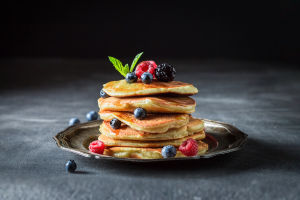During this time, tea was consumed primarily for medicinal purposes, but over time, the practice of drinking tea became a social activity that was enjoyed by people from all walks of life. As tea became more popular, so did the vessels used to brew and serve it, leading to the development of the iconic Chinese teapot.
The origins of the Chinese teapot can be traced back to the Song dynasty, around the 10th century AD. During this period, Yixing, a city in Jiangsu province, became the center of teapot production due to its rich deposits of purple clay, or Zisha.
This type of clay is porous and retains the flavor of tea, making it an ideal material for making teapots. Yixing teapots are often small and unadorned, with simple shapes and designs that emphasize the natural beauty of the clay.
During the Ming dynasty (1368-1644), the art of tea drinking became more refined and formalized. This led to an increase in demand for teapots that were not only functional but also aesthetically pleasing. Teapot makers began to experiment with different shapes, sizes, and decorative techniques, such as carving, embossing, and painting.
The Ming era also saw the introduction of new materials, such as porcelain and jade, which were used to make more elaborate and decorative teapots.
The Qing dynasty (1644-1912) was a golden age for the teapot making in China. The emperor Kangxi was an avid tea drinker and patron of the arts, which helped to promote the development of new teapot styles and designs. Teapot makers began to incorporate elements of nature, such as flowers, birds, and animals, into their designs, as well as calligraphy and traditional Chinese symbols.
Teapots from this era were often large and elaborate, with intricate details and exquisite craftsmanship.
Tea art culture also flourished during the Qing dynasty, with the rise of the tea ceremony. The tea ceremony was a formalized ritual that emphasized the preparation and presentation of tea as a form of art. It involved a set of prescribed steps, from boiling the water to serving the tea, that was designed to create a sense of harmony and tranquillity.
The tea ceremony also gave rise to the practice of tea tasting, or tea appreciation, which involved the careful observation and evaluation of the tea's flavor, aroma, and appearance.
Today, the Chinese teapot and tea art culture continue to thrive, with new generations of teapot makers and tea enthusiasts carrying on the traditions of their ancestors. Modern teapots come in a wide range of styles, materials, and designs, from traditional Yixing clay pots to sleek and modern glass or metal teapots.
Tea art culture has also evolved to embrace new technologies, such as online tea tastings and virtual tea ceremonies, while still honoring the rich history and traditions of Chinese tea culture.
In conclusion, the history and development of the Chinese teapot and tea art culture is a testament to the enduring appeal of tea and its central role in Chinese culture. From its humble beginnings as a medicinal beverage to its status as a symbol of refinement and elegance, tea has played a vital role in shaping Chinese history and culture.
The teapot, as a vessel for brewing and serving tea, has likewise evolved over time, reflecting the changing tastes and preferences of tea drinkers throughout the centuries. Today, the Chinese teapot and tea art culture remain a source of inspiration and delight for tea lovers around the world, as a window into the rich and diverse world of Chinese culture and tradition.


